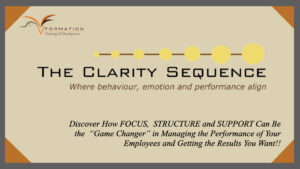
Blog
Exploring the Need for Intercultural Management

The term “Culture” is often tossed around casually, much like “love” and “happiness.” It seems that everyone has their own perspective on its meaning. Even those who are well-versed in the subject often exhibit some variance in their understanding of it.
Dutch professor and social psychologist Geert Hofstede defines culture as “the programming of the human mind that allows one group of people to differentiate itself from another group. It encompasses the collection of shared beliefs, values, and norms that set one group of people apart from another.” He also identified six dimensions of culture, which I would clarify in a bit.
So, what are we talking about? National Culture or Organizational Culture? It’s actually both, because the reality is, in business, the two cannot be completely separated as there is a tremendous overlap between them. This is why I would like to approach it from both perspectives.
National culture is predominantly influenced by historical factors, whereas organizational culture embodies the notion of “how things are done here.” Unlike national culture, organizational culture can be intentionally shaped by the leadership team to reflect the organization’s values, behaviours, and objectives, which play a crucial role in shaping the organization’s operations. It is typically more straightforward and precise when compared to national culture. This is because most organizations have well-defined objectives, roles, activities and behaviours that can be easily communicated to stakeholders.
It is typically more straightforward and precise when compared to national culture. This is because most organizations have well-defined objectives, roles, activities and behaviours that can be easily communicated to stakeholders.
Therefore, to have effective Intercultural Management, we must consider both national and organizational culture. To validate his theories, Hofstede conducted a study involving employees from 70 countries, to identify variations in cultural values and attitudes.
Advocating for cultural awareness is commendable, but its impact remains limited if there is a lack of alignment between these principles and how performance and culture are governed.
So, let’s first take a look at Hofstede’s dimensions (i.e. from a national culture perspective).
Geert Hofstede’s 6 Dimensions of Culture (National)
1.Power distance gauges the extent to which individuals in a society adhere to a hierarchical scale.
2. Individualism versus collectivism illustrates whether individuals in a culture prioritize their personal goals and desires or those of the group.
3. Masculinity versus Femininity (motivation towards achievement and success) signifies the degree to which a culture values traditionally masculine or feminine traits.
4. Uncertainty Avoidance pertains to a culture’s willingness to tolerate change or uncertain future scenarios.
5. Long-term vs. short-term orientation indicates a culture’s focus on either the present or the future.
6. Indulgence vs. Restraint relates to the extent to which individuals permit themselves enjoyment and the fulfillment of personal desires.

Please feel free to compare countries at this link:
https://www.hofstede-insights.com/country-comparison-tool
You can find the results for Trinidad and Tobago here:
https://www.hofstede-insights.com/country-comparison-tool?countries=trinidad+and+tobago
This information can certainly be helpful in teaching us how to adapt to those who come from a different culture. But, how can we now use this information to navigate the intricacies of organizational culture?
Just because you may may operating on an individualistic national culture does not mean that the organizational culture needs to match it. Remember that I stated before that organizational culture can work with its own objectives, roles, activities and defined behaviours.
CLARITY is key.
We have to not only define the environment that we want, but we must also communicate it. This is where organizational culture comes in.
Adapting the 6 dimensions of national culture to the organizational culture perspective
Now that you have an idea of Hofstede’s six dimensions from a national perspective, it’s time to explore these dimensions within your organization. It’s important to bear in mind that, although we analyze them one by one, these six dimensions are interrelated.
To start, here are some examples of questions that you can ask yourself to assess (from your subjective experience) where your department or organization falls on each dimension (the idea is to have points to discuss, not to give them a score):
- Power distance: How freely does information flow between team members and management? Is it easy to get access to your boss?
- Individualism vs Collectivism: In what ways do team members support each other? How easy is it to form friendships? How much of our work is defined by team goals? Are your Key Performance Indicators (KPIs) centered around team goals or individual goals? Is conflict avoided?
- Masculinity vs Femininity: How much of our work is characterized by assertiveness and competitiveness vs win-win situations? How much is psychological safety valued?
- Uncertainty avoidance: How does our organization approach risk-taking? Do we have KPIs properly defined?
- Long-Term vs Short-Term Orientation: How do our organizational strategy and planning prepare us for the future? Have we developed a Strategic Plan that shows where the company should be in the next 5 to 10 years?
- Indulgence vs Restraint: What actions or routines do we have in place to celebrate and recognize the various stages of our growth as professionals (from the daily wins to the big successes)?
After gaining an understanding of how these dimensions can be applied from an organizational perspective, you can begin leveraging them to…
- Define the core values and actual behaviours you want to see
- Improve communication and management practices
- Envision the type of culture that you want.
If your responses seem to fall on one side of the spectrum for a particular dimension, what would happen if you tried embracing some aspects from the opposite end?
For example, if your company tends to value the individualistic over the collectivistic approach, maybe you can start the next team meeting by giving colleagues (who finished challenging projects) some positive feedback. In turn, those individuals can share who helped them the most on their projects. This could foster a sense of connection and gratitude, especially helpful if employee satisfaction ratings are low.
The key is to identify the cultural dimensions you might want to change, and then define behaviours and actions you can take that will support that cultural shift if any.
The Role of Leaders
While individual team members can influence culture, initiating changes in cultural dimensions typically starts with leadership.
Getting a firm grasp of your organizational culture is crucial. This is precisely where tools like Hofstede’s cultural dimensions become indispensable. In tandem with regular employee conversations, surveys, key performance indicators (KPIs), and other metrics, leaders can assess the overall health and stability of their organization and cultivate the growth mindset needed to guide the desired cultural transformation. Most importantly, let employees see progress.
Let us begin to set the cultural tone required for our team or organization.
With our CLARITY SEQUENCE, leaders can gain invaluable insights into how they’re performing and what changes they could make to align performance with the strategic objectives of their organization.
 Tony Ragoonanan is the Founder of V-Formation Training & Development. As a Trainer and Performance Management Specialist, he helps individuals and organizations to align emotion, skill, and behaviour with outcomes. Outside of this, it’s all about family, football, and fitness!!
Tony Ragoonanan is the Founder of V-Formation Training & Development. As a Trainer and Performance Management Specialist, he helps individuals and organizations to align emotion, skill, and behaviour with outcomes. Outside of this, it’s all about family, football, and fitness!!
868-681-3492 | tonyr0909@gmail.com




Leave a reply